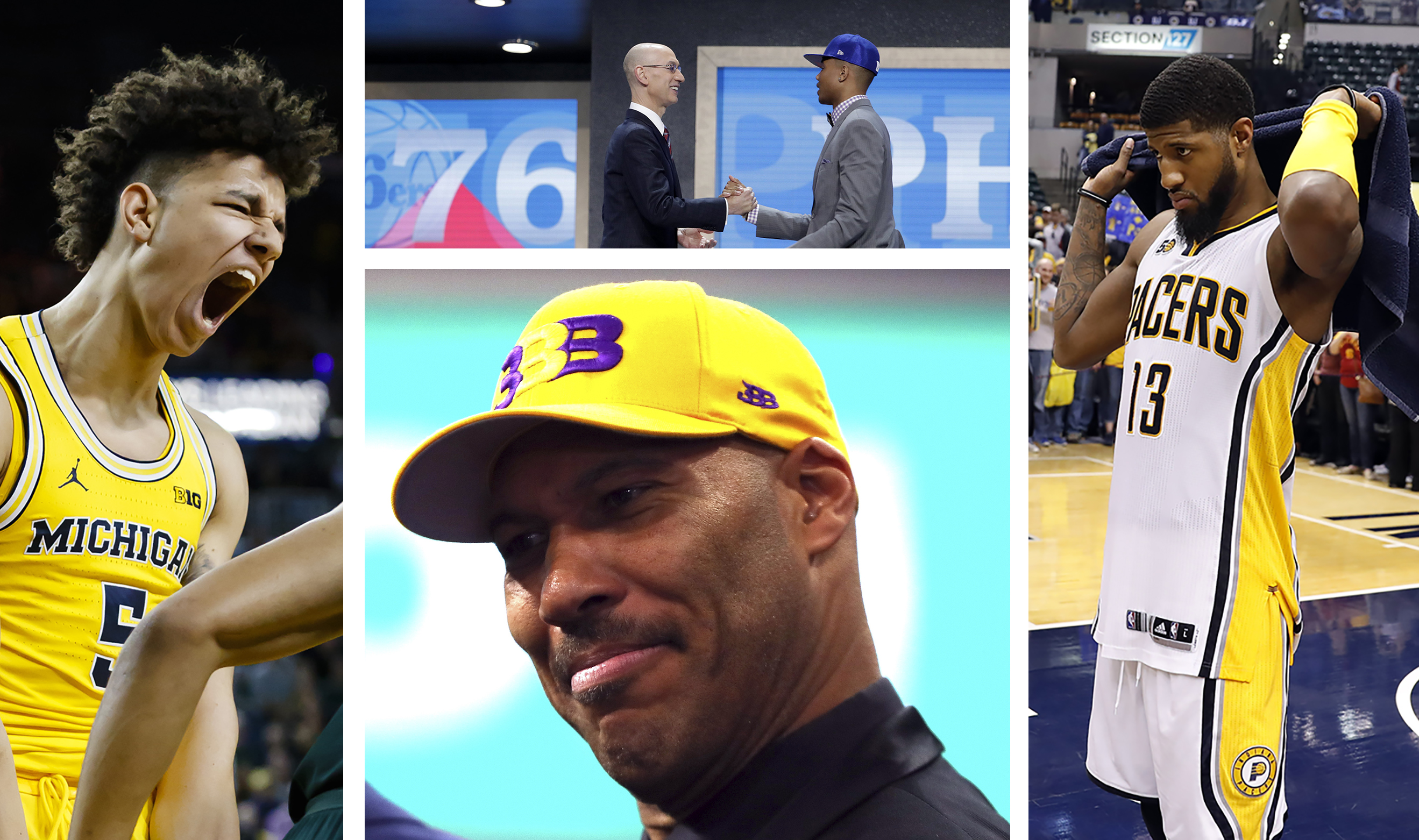The 2017 NBA Draft came with a flurry of trades and very few to no stunning picks. Teams mostly did pretty well, while very few completely owned the night.
With that in mind, For The Win decided to approach the traditional winners-and-losers column a bit different. Here are four high-key winners and losers — people very obviously impacted in a major way — along with four low-key winners and losers, who may have flown below the radar.
High-key winner: LaVar Ball
If you missed Ball’s spectacular interview after his eldest son was drafted by the Los Angeles Lakers, go now immediately and watch this. He showed up with a gold Big Baller Brand hat ready to go, carried the attention of cameras and never once flinched when it came to his hot-taking personality even now that his son actually has an employer.
LaVar Ball now thinks he owns the Lakers. Whether that’s even the slightest bit true will come down to Lonzo’s performance on the court and Magic Johnson’s willingness to accommodate. But no matter what, no one can take from LaVar Ball that he essentially willed his son into becoming the starting point guard of the Lakers, which is a pretty amazing thing to do.
High-key loser: Chicago Bulls

Derick E. Hingle/USA TODAY Sports
A year ago, the big trade would have looked fine. Jimmy Butler hadn’t ascended into the upper ranks of NBA stars quite yet. Zach LaVine hadn’t torn an ACL. Kris Dunn hadn’t had a frustrating rookie season in which his best moments came at shooting guard. But in 2017, the Bulls’ trade of Butler to the Minnesota Timberwolves for LaVine, Dunn and the No. 7 pick looked pretty lopsided even before it was revealed that they gave up the No. 16 pick, too, for whatever reason.
There’s an argument to make that the Bulls are committing to an overdue rebuilding process. But they didn’t get any future assets, the long-distant draft picks that often end up being so valuable when they finally come around. And if that wasn’t enough, they managed to land a very popular second-round pick in Jordan Bell, then turn around and sell his rights to the Golden State Warriors.
Low-key winner: The NCAA
Only three players who didn’t go to an American university were selected in the first round. Only 10 players overall were picked. It’s a complete reversal of recent trends, with “draft-and-stash” players being so popular. The main reason? This class of international prospects simply wasn’t that great.
Low-key loser: Ike Anigbogu

Mark J. Rebilas/USA TODAY Sports
Arguably the best defensive center in this draft class, Anigbogu slipped dramatically on draft day because teams were so worried about the knee injury that’s limited his activity during the draft process. Anigbogu even decided to pass on a green-room invitation, apparently wisely. The interesting part here is that Harry Giles has had four knee surgeries and still was drafted 20th, though he obviously had more upside when healthy than Anigbogu. Still, the Indiana Pacers grabbing Anigbogu at No. 47 was a very smart risk that could pay off huge down the road, if he stays healthy.
High-key winner: The Process
The Philadelphia 76ers’ headliner was Markelle Fultz, but don’t underestimate the scope of their haul. They also added three of the five or six best international prospects in Anzejs Pasecniks (No. 26), Jonah Bolden (No. 36) and Mathias Lessort (No. 50) and a very solid wing prospect in Sterling Brown. But mostly, the 2017 NBA Draft will be remembered as the night when “The Process” took a key step toward success on the court — days after their fans’ pettiest celebrations.
High-key loser: Paul George

Brian Spurlock/USA TODAY Sports
Pacers general manager Kevin Pritchard came out swinging when asked about his star and the trade rumors circling him. George wants to be traded to the Lakers or to a true contender, but the Pacers held on to him for now. That probably will change by the trade deadline — and maybe even during free agency — but George’s discontentment isn’t helping him get what he wants so far. And it’s getting more public by the day.
Low-key winner: D.J. Wilson
Wilson had given NBA scouts little to judge him on as recently as New Year’s Day. He started to come on during Big Ten regular-season play, then became an absolute force of stretch-four play in the conference and NCAA tournaments. He blocks shots, hits 3s and doesn’t do too much else, but that was enough to turn him from forgotten bench-warmer to the No. 17 overall pick for the Milwaukee Bucks.
Low-key loser: Trey Lyles

Russ Isabella/USA TODAY Sports
The Utah Jazz essentially gave up on Lyles. The No. 12 pick in the 2015 NBA Draft was dealt alongside the No. 24 pick for the No. 13 pick this year. That comes after he had a promising rookie season followed by an abysmal second year. There’s more to it than shooting percentages, surely, but Lyles now has to try to get his career back on track amid a crowded Denver Nuggets frontcourt.










